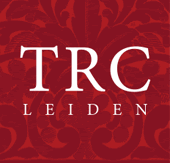There are various theories about the early history of the paisley/buteh motif. It would appear that it originated in Iran during the early first millennium AD. At this date it was a bulbous, almond shaped form, which was often flowery, and more significantly, without a very prominent hook (right). In general, the motif was placed as an isolated bush, as flowers or sprigs, on a plain ground. This motif is specifically known as a buteh.
This form of the motif was used during the Sassanian period (224-651 AD) in architecture, on tiles, as well as on silk textiles. By the 9th century the motif can be found in various parts of the Iranian plateau, including Afghanistan, notably among the reliefs (left) in the Noh-Gumbad (Masjid-i Haji Piyadah) mosque in Balkh, in northern Afghanistan.
By the late Safavid period (1501-1736) the motif had evolved in Iran from the floral form into its more recognisable (modern) shape with a hook. This version of the buteh spread widely throughout the Iranian plateau and elsewhere. Technically the hooked variation of the motif is known as the kalga or kalga buteh, but nowadays it is generally simply called by the same term as the earlier version, namely the buteh.

At the same time, the motif travelled from India to Europe and especially Britain, as well as eastwards to Indonesia. And in doing so it became a global motif. In the late eighteenth century, the buteh/ kalga became even more popular as it was featured on the hand woven and sometimes also embroidered Kashmir shawls that were being exported in vast quantities to Europe and there copied on an industrial scale for the growing demand for this product.


